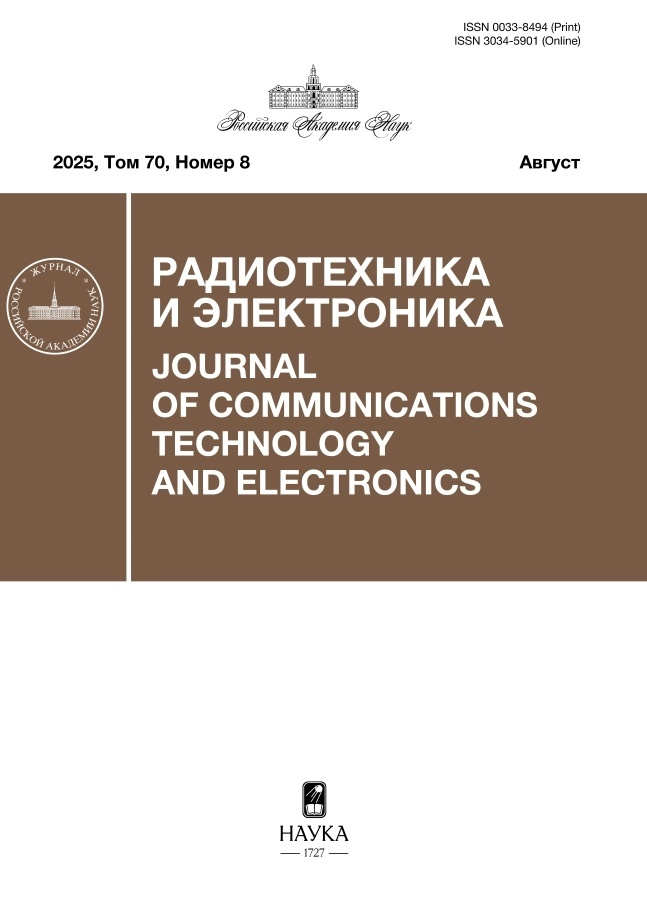New possibilities for using specialty optical fibers
- Authors: Chamorovskiy Y.K.1, Popov S.M.1, Sudas D.P.1, Ryakhovskiy D.V.1, Nikitov S.A.1
-
Affiliations:
- Kotelnikov Institute of Radioengineering and Electronics RAS
- Issue: Vol 70, No 4 (2025)
- Pages: 384-395
- Section: ON THE 70th ANNIVERSARY OF S.A. NIKITOV
- URL: https://rjsocmed.com/0033-8494/article/view/687510
- DOI: https://doi.org/10.31857/S0033849425040084
- EDN: https://elibrary.ru/FSDUBJ
- ID: 687510
Cite item
Abstract
The results of the development and creation of various specialized optical fibers (SOF) for use in science and technology are presented. Methods of creating SOFs with Bragg structures recorded in the light-guiding core are described directly during the process of extracting SOF. Reflective signal sensors and single-frequency laser complexes were created on the basis of these sensors. Fiber-based refractive index meters for liquids were obtained using precise thinning of reflective claddings and nanocoatings. Ways of using multi-core SOFs and possibilities for creating end devices based on them have been shown.
Full Text
About the authors
Yu. K. Chamorovskiy
Kotelnikov Institute of Radioengineering and Electronics RAS
Email: Dmitriisudas@mail.ru
Fryazino branch
Russian Federation, Vvedenskiy Sq., 1, Fryazino, Moscow region, 141190S. M. Popov
Kotelnikov Institute of Radioengineering and Electronics RAS
Email: Dmitriisudas@mail.ru
Fryazino branch
Russian Federation, Vvedenskiy Sq., 1, Fryazino, Moscow region, 141190D. P. Sudas
Kotelnikov Institute of Radioengineering and Electronics RAS
Author for correspondence.
Email: Dmitriisudas@mail.ru
Fryazino branch
Russian Federation, Vvedenskiy Sq., 1, Fryazino, Moscow region, 141190D. V. Ryakhovskiy
Kotelnikov Institute of Radioengineering and Electronics RAS
Email: Dmitriisudas@mail.ru
Fryazino branch
Russian Federation, Vvedenskiy Sq., 1, Fryazino, Moscow region, 141190S. A. Nikitov
Kotelnikov Institute of Radioengineering and Electronics RAS
Email: Dmitriisudas@mail.ru
Russian Federation, Mokhovaya Str., 11, build. 7, Moscow, 125009
References
- Specialty Optical Fibers Handbook / Eds. by A. Méndez, T. F. Morse. Oxford: Academic Press, 2007.
- Paul M.C., Ferreira M.F.S. Specialty Optical Fibers. Materials, Fabrication Technology and Applications / Eds. by M. C. Paul, M.F. S. Ferreira. Sawston: Woodhead Publishing, 2024. P. 3.
- He J., Xu B., Xu X. et al. // Photonic Sensors. 2021. V. 11. P. 203.
- Dostovalov A.V., Wolf A.A., Parygin A.V. et al. // Opt. Express. 2016. V. 24. № 15. P. 16232.
- Chamorovskiy Yu.K., Starostin N.I., Ryabko M.V. et al. // Opt. Commun. 2009. V. 282. № 23. P. 4618.
- Уланов А.Е., Устимчик В.Е., Чаморовский Ю.К., Никитов С.А. // РЭ. 2014. Т. 59. № 5. С. 445.
- Ustimchik V.E., Rissanen J., Popov S.M. et al. // Opt. Express. 2017. V. 25. № 9. P. 10693.
- Li C., Tang J., Cheng C. et al. // Photonic Sensors. 2021. V. 11. P. 91.
- Wang Y., Gong J., Dong B. et al. // J. Lightwave Technol. 2012. V. 30. № 17. P. 2751.
- Przhiialkovskii D.V., Butov O.V. // Results in Phys. 2021. V. 30. Article No. 104902.
- Popov S.M., Ryakhovskii D.V., Kolosovskii A.O. et al. // Bull. Lebedev Phys. Inst. 2023. V. 50. № Suppl 13. P. S1464.
- Shatalin S.V., Treschikov V.N., Rogers A.J. // Appl.Opt. 1998. V. 37. № 24. P. 5600.
- Попов С.М., Бутов О.В., Колосовский А.О. и др. // Квантов. электрон. 2019. Т. 49. № 12. С. 1127.
- Харасов Д.Р., Бенгальский Д.М., Вяткин М.Ю. и др. // Квантов. Электрон. 2020. Т. 50. № 5. С. 510.
- Turitsyn S.K., Babin S.A., El-Taher A.E. et al. // Nature Photonics. 2010. V. 4. № 4. P. 231.
- Fotiadi A.A. // Nature Photonics. 2010. V. 4. № 4. P. 204.
- Popov S.M., Butova O.V., Chamorovski Y.K. et al. // Results in Phys. 2018. V. 9. P. 806.
- Popov S.M., Butov O.V., Bazakutsa A.P. et al. // Results in Phys. 2020. V. 16. Article No. 102868.
- Rybaltovsky A., Popov S., Ryakhovskiy D. et al. // Photonics. 2022. V. 9. № 11. P. 840.
- Кузнецов П.И., Судас Д.П., Савельев Е.А. // ПТЭ. 2020. № 4. С. 83.
- Kuznetsov P.I., Sudas D.P., Savelyev E.A. // Sensors and Actuators A: Physical. 2021. V. 321. Article No. 112576.
- Savelyev E.A., Sudas D.P., Kuztestov P.I. // Opt. Lett. 2022. V. 47. № 2. P. 361.
- Sudas D.P., Zakharov L.Yu., Jitov V.A. et al. // Sensors. 2022. V. 22. № 10. P. 3665.
- Chamorovskiy Yu.K., Butov O.V., Kolosovskiy A.O. et al. // Opt. Fiber Technol. 2017. V. 34. P. 30.
- Бутов О.В., Базакуца А.П., Федоров А.Н. и др. // Фотон-экспресс. 2021. № 6 (174). С. 262.
- Xue P., Qiang Liu Q., Lu Sh. et al. // Opt. Fiber Technol. 2023. V. 77. Article No. 103277.
- Pябко М.В., Никитов С.А., Чаморовский Ю.К. // Нано- и микросистемная техника. 2005. № 5. С. 33.
Supplementary files






















